Victron RV upgrade, MultiPlus inverter especially
My family and I are getting ready to escape the Florida summer heat and visit friends and family we haven’t seen in much too long. We’re taking our RV, and we’re planning a mix of campgrounds, parks, friends’ driveways, and Harvest Hosts for our trip. This mix of stops means sporadic availability of shore power, and that makes for great testing opportunities. I’ve been planning to install my DIY LiFePO4 battery to get some real-world testing in. But, to test any LiFePO4 battery, I needed to ensure the inverter and charger systems would coexist nicely with lithium chemistries. Plus, I wanted to upgrade my monitoring capabilities to see everything happening within the 12-volt system. What follows is the first entry on updating the electrical system and getting everything ready for LiFePO4.
System selection
Our RV is a 2016, so it’s pretty recent and has a pretty well-designed electrical system. But that won’t stop me from tearing out some perfectly good equipment and replacing it with the latest and greatest. Harvey (I can’t keep saying our RV and I’m used to naming my boats, so from Have an RV I get Harvey) came from the factory with a Magnum Energy MS2000 2000 watt inverter/charger. Unfortunately, my inverter was made before Magnum had LiFePO4 charge profiles. The inverter is upgradeable with a remote that has the correct profiles. But, my remote doesn’t have those profiles and would need to be replaced. Plus, I want to pull data out of the inverter to understand the system’s performance better.
Ultimately, faced with spending quite a bit on upgrading the Magnum, I decided to replace the Inverter and install a mostly Victron-based system. I chose Victron in part because I know their equipment well and think it offers a good blend of performance, quality, and value. However, the data and insight offered by VRM, Victron’s management portal, pushed me over the edge to a Victron system.
Frequent Panbo readers have certainly read plenty of praise for VRM mainly from Ben Ellison (some here, here, and here). I’m also impressed by VRM’s deep insight and easy integration of Victron equipment. Eagle-eyed readers might note the name of this installation in the screenshot above, Harvey Venus-Pi. I’m running VenusOS (Victron’s monitoring system) on a $35 Raspberry Pi, but more about that later.
My family is used to me using our boat (and primary home) as a floating laboratory, and they’re remarkably forgiving when my tests inconvenience them. But I sure don’t want our travel plans ground to a halt by my testing. I’m familiar with Victron’s equipment and confident it will work well and deliver the monitoring I desire.
The last bonus for me is the opportunity to directly compare the all Mastervolt system installed on Have Another Day with the new system on Harvey.
Inverter replacement
Victron has been steadily rolling out new inverter and inverter/chargers with a new industrial design and updated internals. The new designs are also taller and thinner than the older, somewhat squat models. All of the new models start with MultiPlus-II — except the MultiPlus 2000VA I installed. I’m especially intrigued by the MultiPlus-II GX and EasySolar-II GX models with built-in system monitoring controllers and, in the case of the EasySolar, a built-in solar charge controller. Currently, they’re only available in 24 and 48-volt models so not appropriate for my 12-volt applications.
Out with the old, in with the MultiPlus 2000VA
The new MultiPlus 2000VA produces a maximum of 2,000 volt-amps or 1,6000 watts of continuous AC power while the Magnum can produce 2,000 watts. Additionally, the Victron has a smaller, 80-amp charger. But, based on my potential loads, I’m confident the new inverter is plenty.
Although the Victron is a little smaller, it’s also more efficient. At idle, with the inverter on but no load, the Victron draws 10 watts and the Magnum draws 25 watts. Two and a half times! At 12 volts the Victron will draw a little under an amp and the Magnum just over two amps. Over a 24 hour period that’s more than 25 amp hours or 360 watt hours! Plus, the Victron’s 93% peak or maximum efficiency is noticeably greater than the 90.6% rating of the Magnum.
Installing the new inverter
Similar to many cruising boats, the inverter/charger is the heart of Harvey’s 12-volt DC house power system. The Inverter charges the house batteries and is, by far, the largest potential DC load. So, swapping the inverter is a big change and probably the most complex step of this project. Unlike on a boat, there’s no engine room with a bulkhead on which to mount the inverter. Instead, the inverter hangs from the ceiling of one of the storage compartments under the RV.
Getting the old inverter out wasn’t too difficult, but I was a bit perplexed about how to hang the new 15 kg / 33 lb inverter while I secured it. Eventually, I came up with the setup you can see above. I hung the inverter from two zip-tie slings and then worked a bottle jack in. I was able to jack the inverter up a bit, tighten the zip-ties and repeat until the inverter was snug on its mounting rails. The best part was that I didn’t drop it on my face while laying under it to secure it.
The rest of the inverter install required connecting the battery cables and the 110-volt input and output leads. It’s an adjustment for me to see solid conductor wires on an RV, and I’m reminded that I prefer to work with stranded cables. The last connection is the VE.Bus Cat5 cable that ties the MultiPlus into VRM via a VenusOS monitoring system.
The MultiPlus 2000 I installed is a new model for Victron. It utilizes Victron’s new industrial design for their inverter/chargers and offers increased efficiency. In speaking with a Victron representative, he explained that the new models use slightly smaller transformers carefully matched to the loads they’re designed to serve. The biggest specification difference appears to be an increase in maximum efficiency from 92% for the older units to 93% for the new ones.
Venus OS on a Raspberry Pi
I’m a big fan of Victron’s presence in the open-source community and their openness to tinkerers and experimenters. Victron sells an entire line of devices that can collect and report on data from their devices. Victron calls them GX devices and they run a Linux-based operating system Victron calls Venus OS. I use a Cerbo GX on my test bench to report on the status of devices while I’m testing them and have been really pleased with it. While exploring some release notes, I noticed a link to a version of Venus OS that runs on a Raspberry Pi. I have a lot of Raspberry Pis floating around, so grabbing one and a MicroSD card to try it out only took a few minutes.
My investment of time yielded a fully running GX device and data uploaded to VRM. I used a $28 VE.Direct to USB cable connected to Harvey’s SmartShunt and had data on the RV’s batteries nicely displayed in VRM. Buoyed by my initial success, I mounted the Raspberry Pi in the inverter compartment. The solar charge controller also connects to my Venus Pi via another VE.Direct cable and the inverter uses the $69 MK3 VE.BUS to USB module at the bottom of the picture.
The Cerbo GX and Venus GX are both right around $300. The solution I’ve implemented above was a total of about $180 by the time I’ve paid for the Raspberry Pi, cables, and random bits. If I had fewer components it would have been cheaper, and if I had more, the cost would go up. With enough devices, it could be cheaper to use one of Victron’s own devices. The GX devices are very reasonably priced themselves, but the option of starting with a $35 computer can make it even cheaper.
It makes me smile that the most recent editor of the GitHub entry on Venus OS on Raspberry Pi is MPVader. I do believe that would be Matthijs Vader, Victron’s managing director. So, this isn’t some unauthorized skunkworks, but the boss himself working to make Victron’s code work on a system they won’t make any money selling.
Failed LiFePO4 install
I’ve spent a lot of time prepping the DC system to install LiFePO4 batteries. The plan was to install them prior to leaving for our summer travels. But, I’d been planning on using the DIY battery I made and wrote about and another DIY battery that I’m planning to make. Unfortunately, the parts for the second battery haven’t arrived and I’m just about out of time before we leave. So, now I’ve been debating installing one battery. With 280 amp hours and around 220 amp hours useable capacity I’m not too worried about capacity. But, the BMS in this battery is rated for 120 amps, well short of the inverter’s peak potential load. Plus, especially with a BMS-controlled battery, I prefer two batteries so a single fault doesn’t take out our 12-volt power.
I considered a hybrid LiFePO4 and FLA topology but just couldn’t get comfortable with what I know so far. It’s possible more research would get me comfortable with the idea but I’m not there yet.
No matter what I decided I know I want my DIY battery in a battery box to protect any exposed terminals from accidental shorting. It turns out that when I put the battery in a group-31 battery box I managed to catch the very thin wires for the temperature sensor and yank them off the BMS’ circuit board. Courtesy of this mistake, the BMS shows a low temperature fault and won’t allow any charging because it believes the battery is very cold. The good news is I’ve seen proof the BMS’ temperature protection works. The bad news is I think I might have ruined this BMS.
Final thoughts
Regardless of what happens with the BMS, the path is pretty clear. I’m not going to be installing this battery before we leave in just a few days. So, the early portion of the trip will continue with the flooded lead-acid batteries. But, I might have another idea for LiFePO4 batteries for the RV. So, stay tuned for future updates. But, in the meantime, I’m looking forward to putting the new components through their paces.


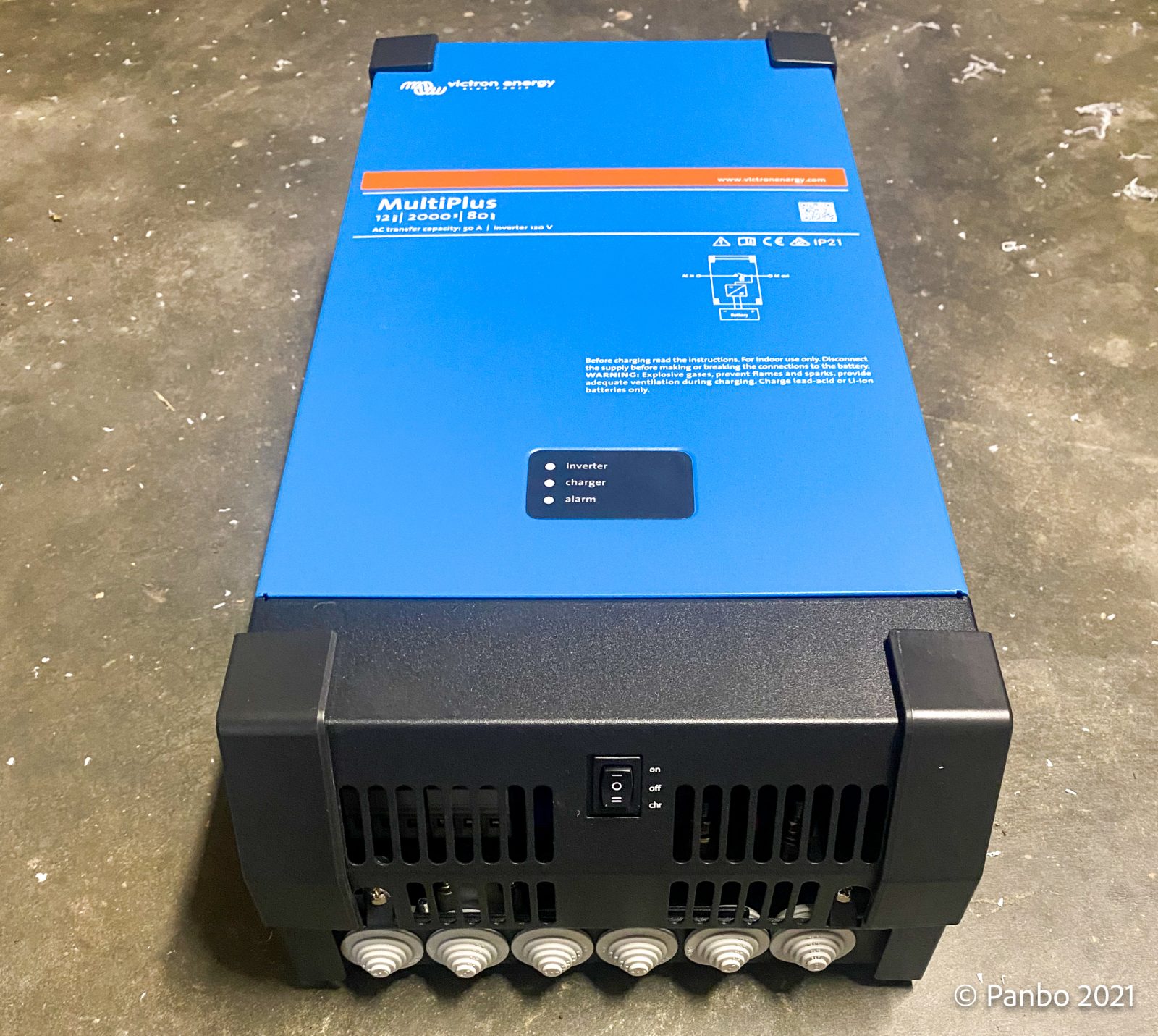

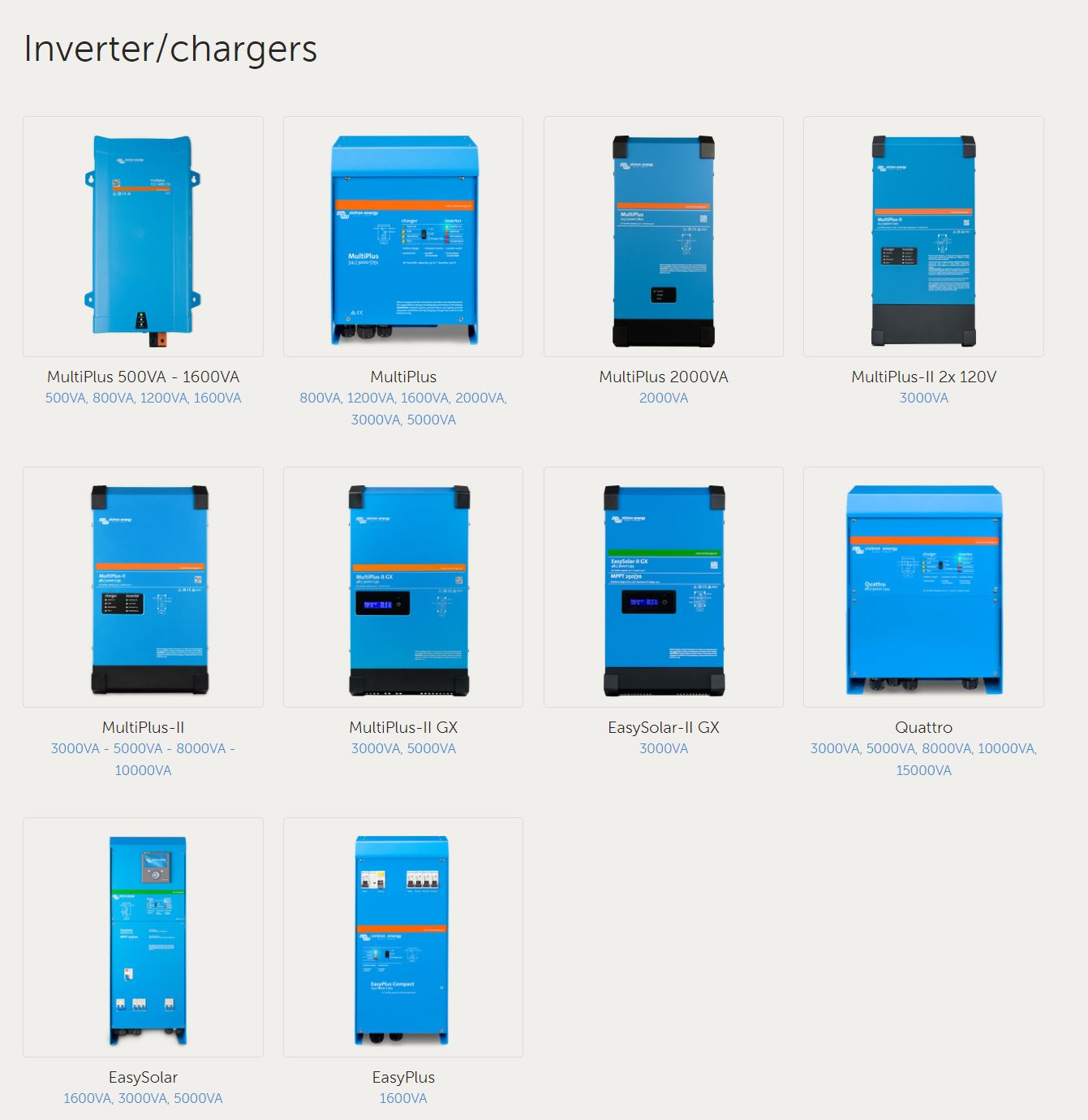
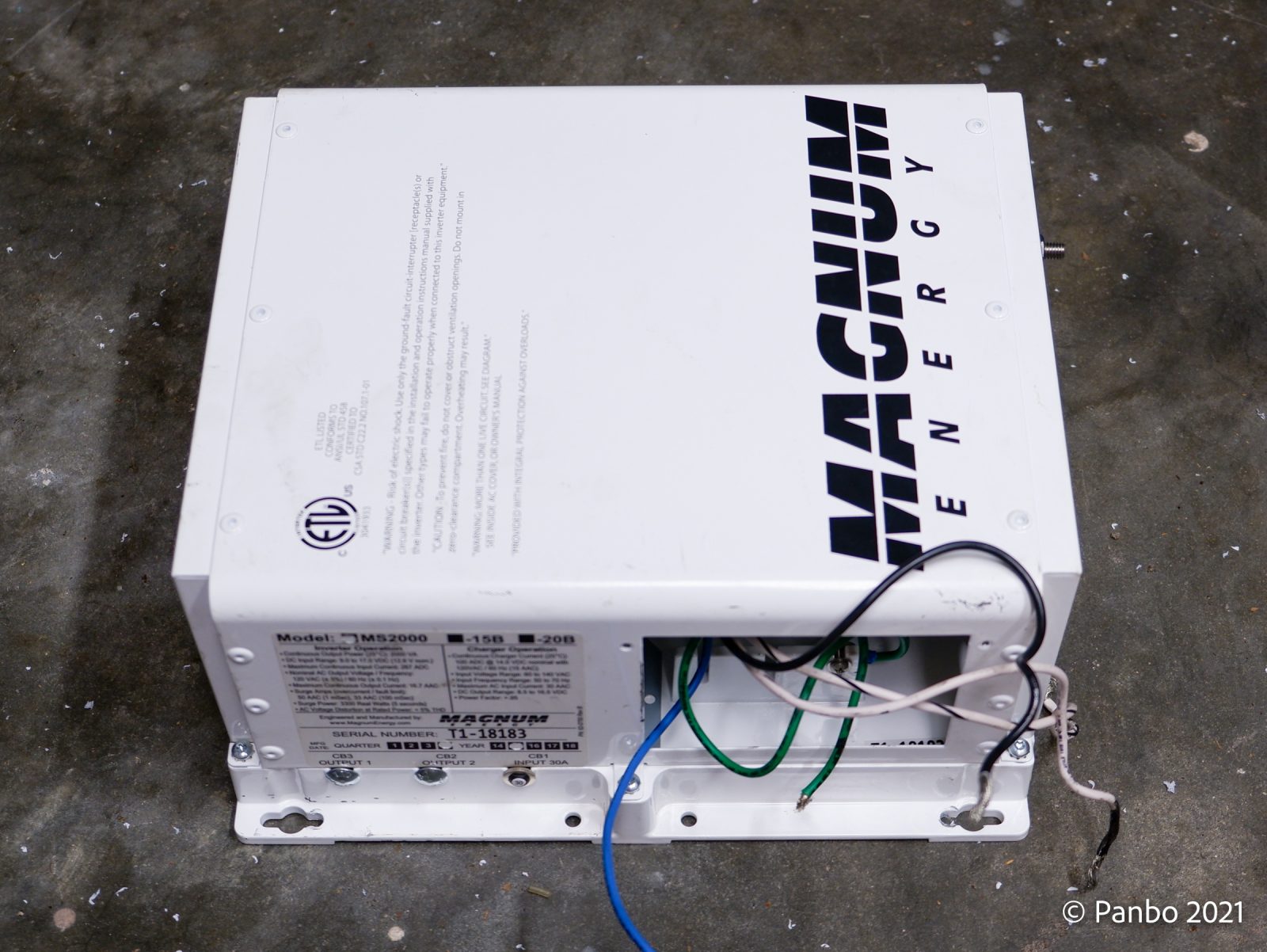
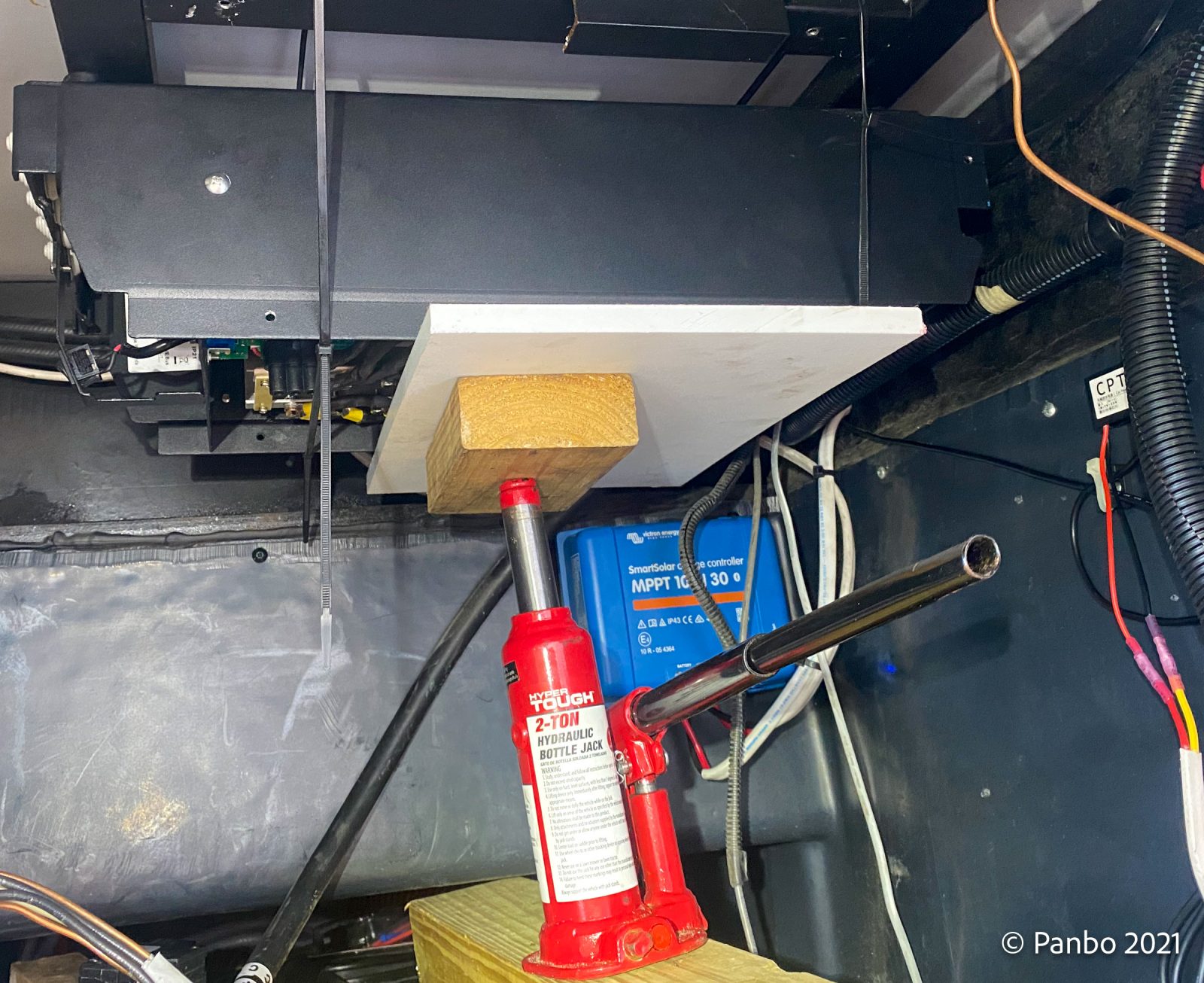
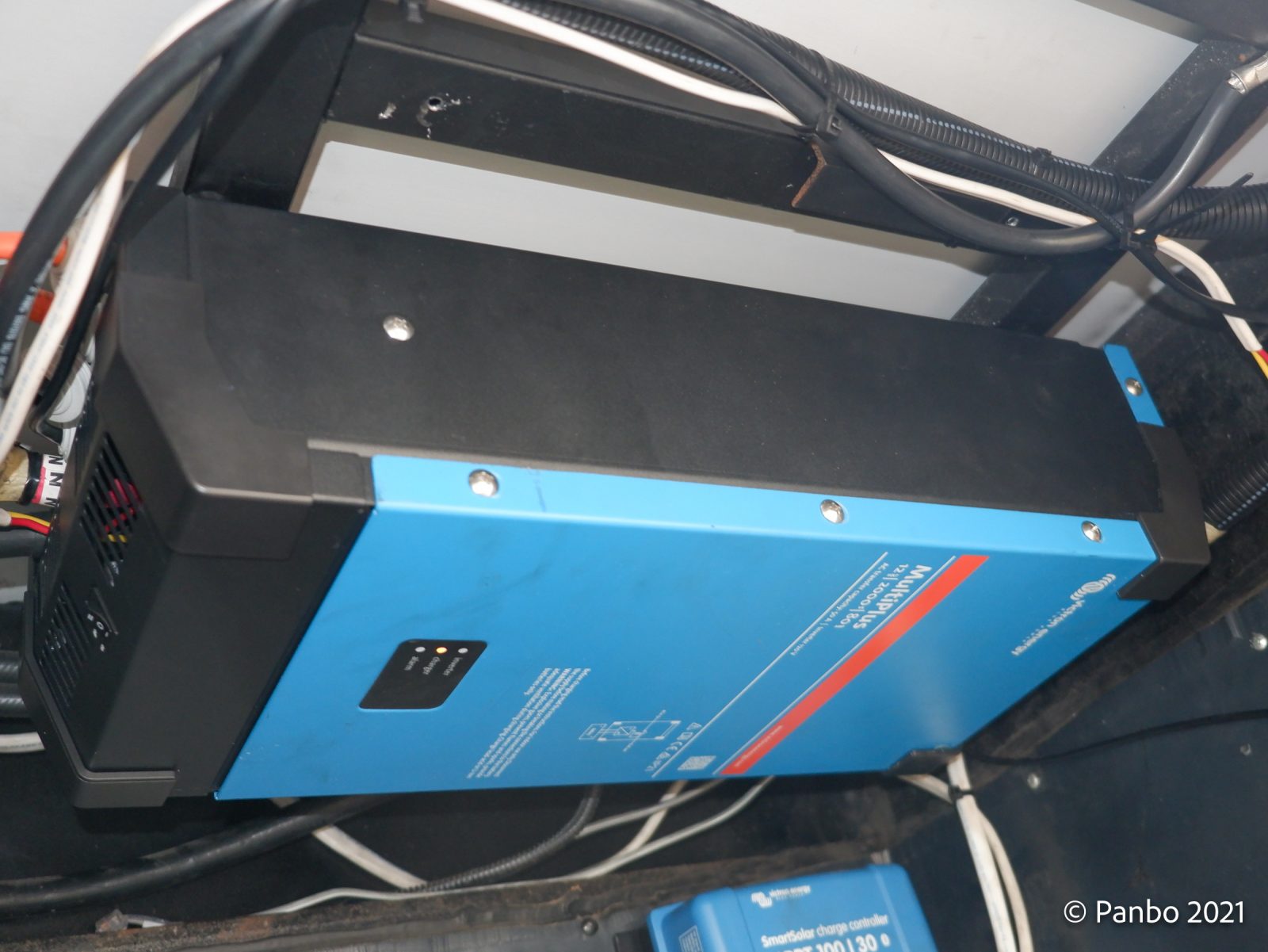
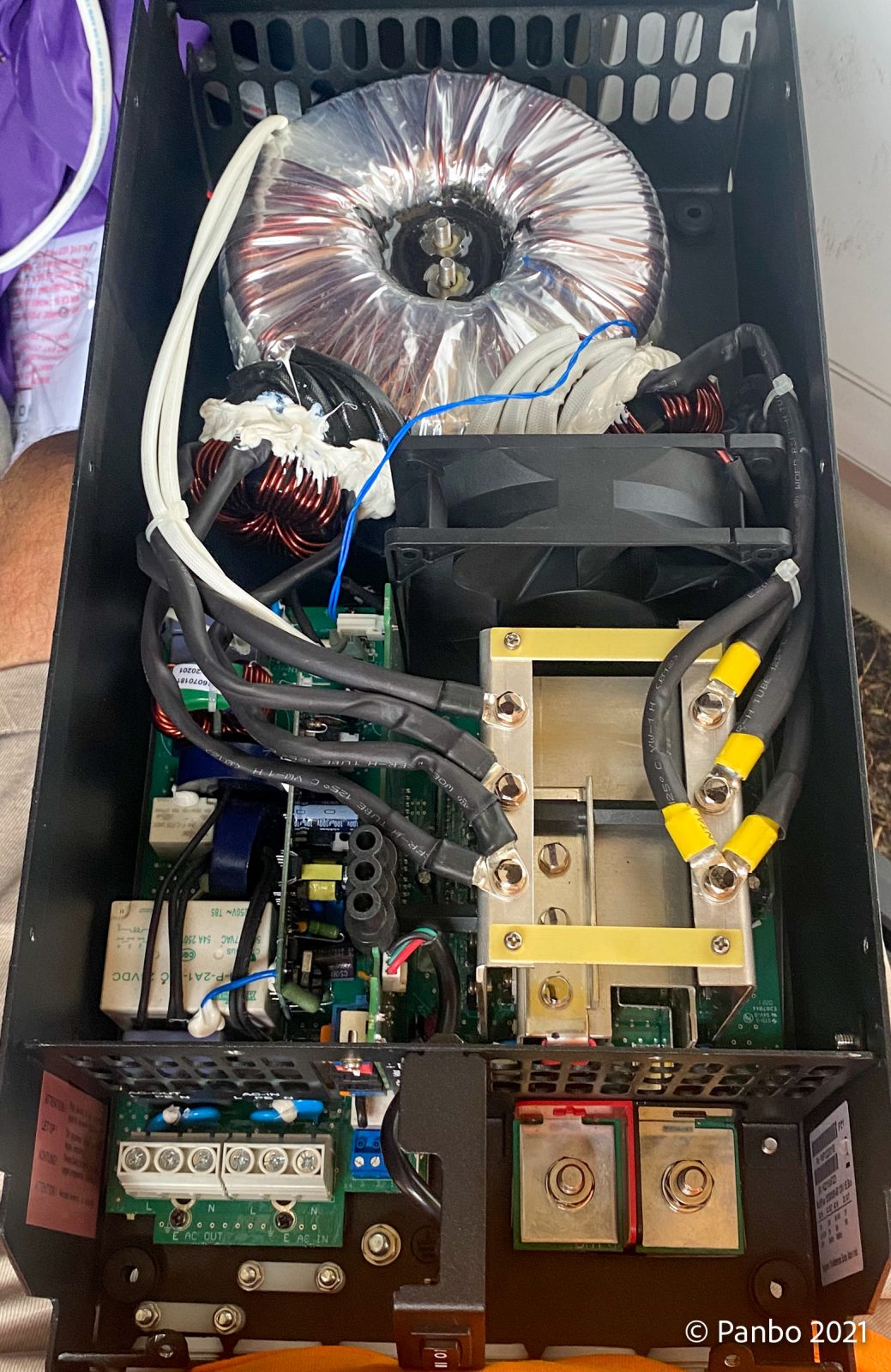
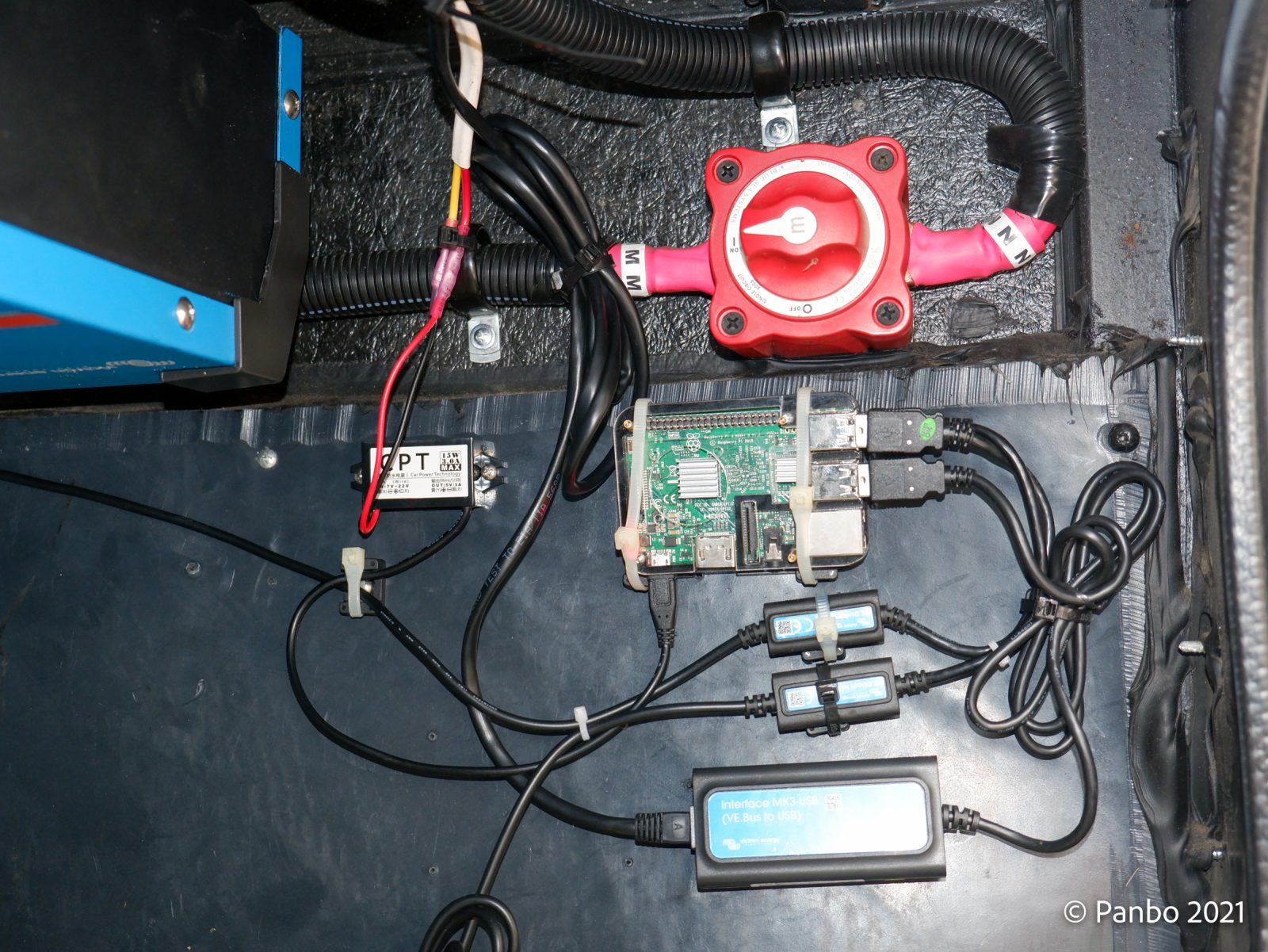

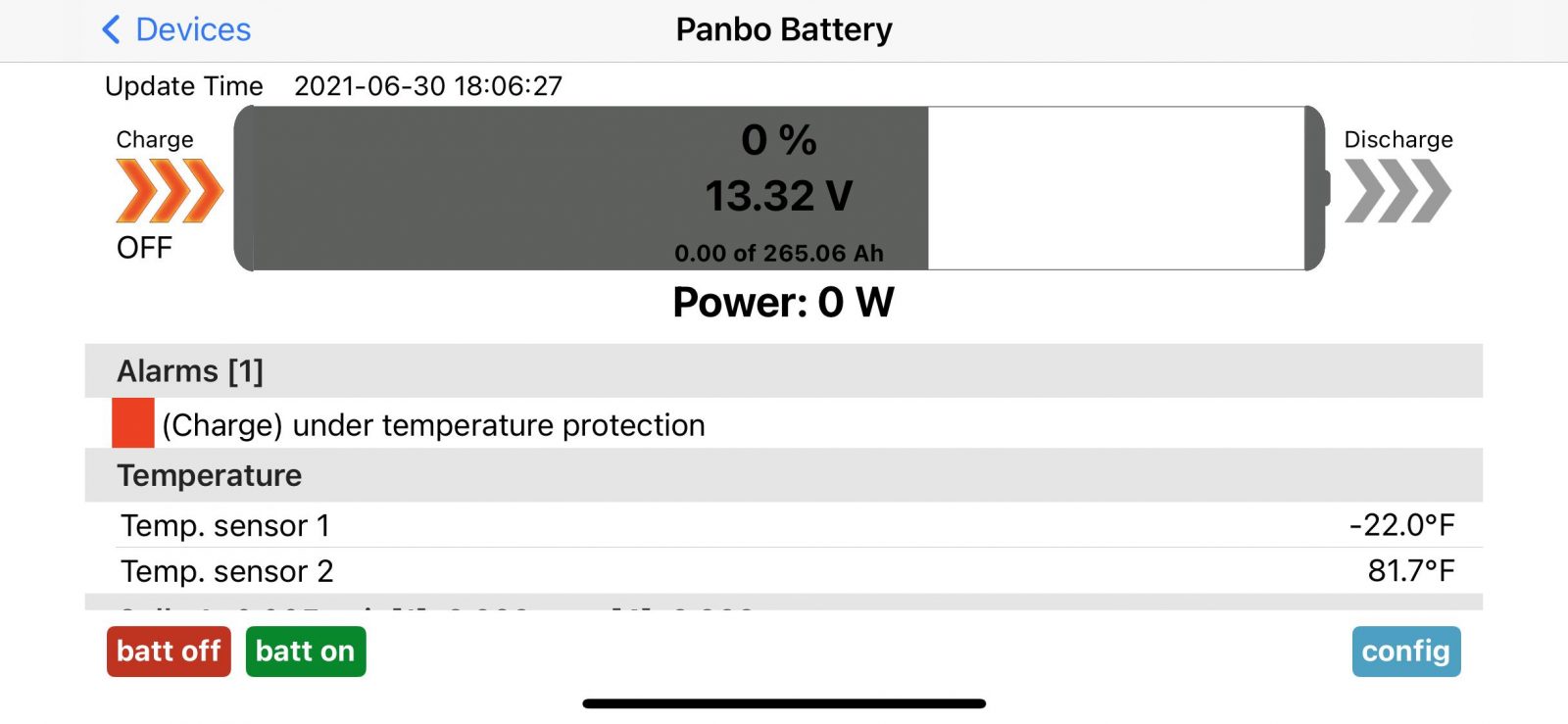

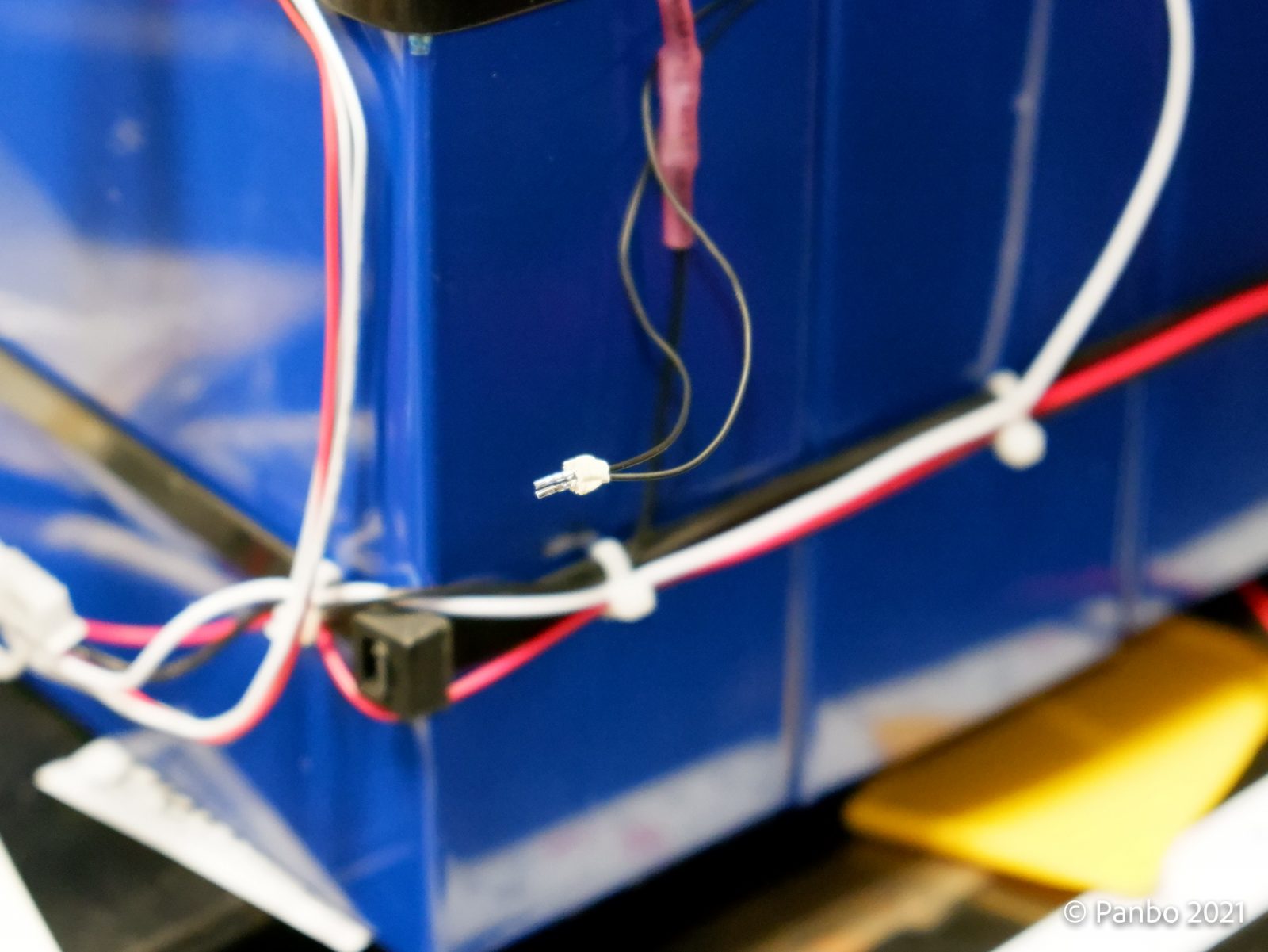











Ben S: You mentioned the new inverter puts out 2000 volt-amps or 1600 W. What’s the difference when by definition a volt-amp is a Watt?
Don
NEVER MIND. I looked up the difference.
Don
While Volts x Amps = Watts for DC power, AC power depends on the “power factor”. If the AC load is anything other than resistive (a motor is inductive for example, and a toaster would be a combined resistive and inductive load) power transfer between the source and the load is not perfect. So for a resistive load the power factor is 1 and transfer is ideal – Volts(120)*Amps(10)*Power Factor(1) = 1200Watts. But for a motor load the power factor will be less than 1. Ben’s example assumes a power factor of 0.8 (120V*16.6Amps*0.8=1600)but the power factor changes depending on the device itself. I assume Ben is being conservative here.
David,
Thanks for the explanation. It perfectly explains the difference. The 0.8 power factor here actually comes from Victron’s specs. In thinking it through, I’m not sure if they’re being conservative or aggressive in their specs. Can the inverter produce 2,000 watts continuously if the PF is 1.0? I suspect not, so I think they might be using PF to get to 2,000VA.
-Ben S.
Ben,
What type fastenings did you use to secure to the overhead? I recently asked Victron about a similar mounting in our RV and Peter Kennedy replied for them (Peter worked on one of our boats back when we lived in Annapolis, in fact I’m on his wait list for the inverter). Anyway, the general recommendation was against mounting overhead, partly due to logistics (which we know can be worked thru) and partly keeping it there once installed. Curious whether you used machine screws, sheetmetal screws or what?
Ours will be the Multiplus II 2x 120V which is about 10 lbs heavier than yours.
Rip,
I used #14 sheet metal screws through the mounting rail for the previous inverter. The factory installed the previous inverter and welded on retaining brackets that fit over the inverter. Those, of course, don’t align with the Victron but I feel pretty good about the holding power of the #14s. We’ve only logged about 500 miles with the new inverter in place, so far. It hasn’t moved at all and I’ll keep checking it.
If this mounting scheme proves problematic, I’ll probably go to something, like a piece of wood or metal, that can slip into the same brackets the factory welded on and then through-bolt the inverter to that.
-Ben S.
I was under the impression that an horizontal overhead mounting was not recommended due to cooling issues. I was looking at a shelf mounting for my Tiffin RV so I could install additional cooling fans but based on this installation it looks like I could simply replace my Magnum the same way as Ben since it is currently mounted to the ceiling in my basement as was his.
In my 2 RV installs, one was horizontal on a bulkhead andthe other is flat on the back. On the second I enlarged the top to allow better venting. No issues with either, just proactive on the venting.
Bob,
It’s definitely not optimal. But, that is often how the inverters come originally and it’s not always viable to move them. The MultiPlus does a good job of regulating its temperature including derating as necessary. I’ve now had inverters mounted this way for about four years. So far, the worst I’ve seen is an occasional temperature warning when I’m running the system particularly hard. In my opinion, that isn’t bad and I’m willing to live with any potential shortening of the life of the inverter.
-Ben S.
Thinking back to my RVing days I believe most of the load on your system will be reactive from the heat pump’s compressors and fan motors and from the water pumps. Will you be using gas or batteries for the water heater? At any rate that load will be electrically resistive. I’m scratching my head a little but thinking back I seem to recall that batteries don’t care about power factor as they don’t see it. All load is simply load to a battery, no? Well shucks, large inverters are after my time but the batteries are the only power source for the inverters so perhaps I don’t belong in the conversation.
Ben, well done article!
As you run both Mastervolt and Victron systems, did you find some kind of CAN-Bus converter to let the MasterBus and the VE-Bus communicate?
Would be extremely nice being able to combine the best of those two worlds!
Regards ans enjoy your trip, Jan
Jan,
Currently, the Mastervolt system is on the boat and the Victron system is on the RV so there’s not really any communication between the two.
But, thinking it through, right now the only common communication option would be NMEA 2000. I can’t think of any data that either Mastervolt or Victron reads from NMEA 2000 and uses to make decisions about its operation.
-Ben S.
Ben,
since Batrium BMS does Tx/RX communication with the Victron inverters my hope was, that somebody already programmed an interface translating from/to MasterBus-CAN and from/to Victron-CAN.
But I assume Mastervolt won’t disclose their protocol as they also don’t with their wiring diagrams.
This is an enormous disadvantage of the Mastervolt environment.
Jan
Jan,
I understand now and agree that would be great. Mastervolt’s approach is definitely more closed off. I agree that it would be very nice if they would increase their interoperability but I honestly doubt they will.
-Ben S.
IIRC Victron uses SAE J1939 standard for their own CAN, Mastervolt is closed.
That is the reason Victron and (Automotive targeted) BMS can communicate.
For Mastervolt you have to go via the NMEA2000 route, as far as I known.
On our RV, and most that I know of, the heating and cooling loads are only served by shore-power or the generator. Our DC system and the inverter service the fridge, convenience outlets, entertainment systems, the water system, and blowers for the propane heat.
I believe that you’re correct that the batteries don’t care about power factor. But, the inverter does care and, I think, at the end of the day can only provide a continuous 1,600 watts of power. Victron gets to a 2,000 VA rating by assuming a lower power factor. If I’m looking at all of this correct, it’s essentially marketing that has them promoting VA over watts.
-Ben S.
Fridge not also propane? Assuming an absorption unit. That has to be resistive but could save you a few watts on propane. We also ran a small D battery powered circulating fan in our fridge which seemed to improve cooling.
Our fridge is a household unit fed by the inverter when the RV is away from either shore power or the generator. There’s a pretty strong shift away from absorption fridges. In fact, all-electric (no propane) has become a selling point in new RVs. Our unit has propane still for the water heater, furnaces, and cook-top, but the fridge is all-electric. It’s a compromise I really like. Especially since it reduces the potential complexities of an absorption fridge, as well as the fire risk of one.
-Ben S.
I recently moved from a propane to a 12v Vitrifrigo 2.7 refer in my caravan. That and a DIY 200Ah Li battery makes for a no-brainer setup for at least 3-4 days before charging is needed. We have ice for days, which is very g&t friendly.
That refrigerator is MUCH smaller than found on most motorhomes sold in the US.
Wich Multiplus is
better the old or the new one?
I need a Victron inverter charger -24 V,1600VA 220V/50Hz. Whats the cost
I know this is an older post, but how has the ceiling mount held up? Overheating or any issues?
Edward,
I sold the RV this was mounted in a little over a year ago. Prior to selling it, I’d logged about 25,000 miles with the inverter mounted as shown in this article. I’m pleased to report the inverter never moved. If I pushed the inverter close to its rated limit on hot days, I did sometimes get temperature warnings from it. But, I’ve seen those same temperature warnings on vertically mounted MultiPlus units as well. I suspect the warnings have more to do with the inverter being mounted in a somewhat sealed compartment and eventually heating the volume of air in the compartment. I probably could have improved that situation with active ventilation, but the warnings were sporadic enough I never felt compelled to do so.
My new RV has a MultiPlus 3000va inverter mounted in basically the same fashion (RV manufacturers seem to like hanging inverters in a compartment) and I see a few more high temperature warnings from it. So, I’m likely to install a few 12 volt fans to help cool the unit.
-Ben S.
Thank you, I am going to replace my Xantrex Freedom 2000 with the Victron MPII 12v 3000va. I was told “Don’t mount it upside down like that, the heavy toroidal transformer will be fighting gravity and gravity always eventually wins” – I to may add cooling and will watch and see if gravity is winning. I truly want the Victron app and features that come with the MPII.